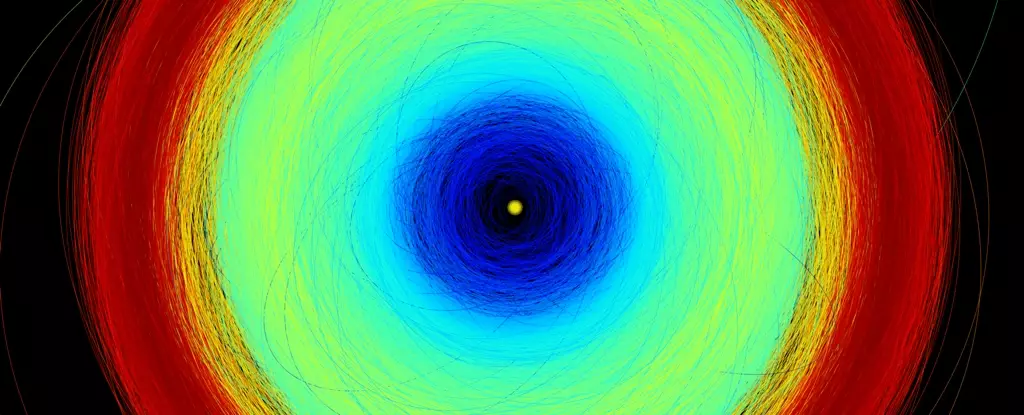The Gaia mission, known for its incredible star-charting capabilities in the Milky Way Galaxy, has also proven to be a skilled asteroid hunter. Recent reports from astronomers reveal the success of Gaia in identifying more moons of asteroids within our solar system. The latest data release, Gaia’s release 3, has unveiled observations that will add an astonishing 352 new binary asteroids to the existing count. This discovery almost doubles the number of known asteroids with moons, showcasing the spacecraft’s ability to uncover the hidden secrets of our celestial neighborhood.
Unlocking the Complexity of Asteroids
Gaia’s observations have not only confirmed the existence of moons around at least 350 asteroids, turning them into binary systems, but have also shed light on the intricate nature of these celestial bodies. The spacecraft’s precise sweeps across the sky have revealed a multitude of binary asteroids, challenging our previous assumptions about the simplicity of asteroid structures. These recent findings, resulting from “blind” astrometric surveys, emphasize the vastness and diversity of the asteroid population, prompting a reevaluation of our understanding of these objects.
Traditionally considered a mundane aspect of astronomy, astrometry plays a crucial role in our exploration of the cosmos. By meticulously studying the positions of celestial objects, astronomers can unravel mysteries that would otherwise remain hidden. Gaia’s astrometric measurements have proven to be invaluable in detecting subtle movements in asteroids caused by their companions. This precision has not only expanded our knowledge of binary asteroids but has also enabled researchers to delve into the chemistry of these objects, providing valuable insights into their composition and evolution.
Insights into the Solar System
The Solar System stands as a complex assembly of celestial phenomena, encompassing a variety of objects ranging from planets to asteroids. Within this diverse collection, asteroids and comets serve as remnants of the early stages of planetary formation, offering valuable clues about the conditions present during the solar system’s inception. The discovery of binary asteroids, such as those unveiled by Gaia, highlights the dynamic nature of these objects and their role in shaping the evolution of the solar system.
Asteroids, grouped into various families based on their orbits and characteristics, provide a window into the history of our solar system. While the Asteroid Belt between Mars and Jupiter houses the largest concentration of asteroids, other regions contain distinct collections that offer unique insights into the formation and evolution of these rocky bodies. The presence of binary asteroids underscores the dynamic interactions that occur among asteroids, suggesting a complex interplay of forces that shape their orbits and compositions.
Future Prospects and Discoveries
As Gaia continues its mission and additional data releases are anticipated, the study of asteroids and their moons is poised for further advancements. Through precise astrometric measurements and comprehensive observations, astronomers aim to unravel the mysteries surrounding binary asteroids and elucidate the mechanisms behind their formation. By harnessing the power of advanced telescopes and space missions, scientists hope to gain a deeper understanding of these intriguing celestial objects, paving the way for new discoveries in asteroid research.
The hunt for moons of asteroids in our solar system represents a captivating journey of exploration and discovery. Through the meticulous efforts of missions like Gaia and the dedication of astronomers worldwide, we continue to unveil the hidden complexities of our celestial neighborhood. As we peer into the depths of space and unravel the secrets of binary asteroids, we are propelled towards a greater understanding of the intricate dance of celestial bodies that shapes the vast expanse of the cosmos.


Leave a Reply